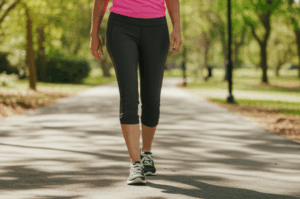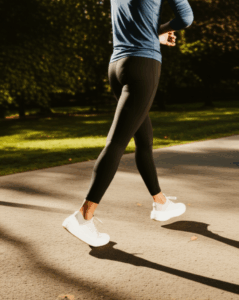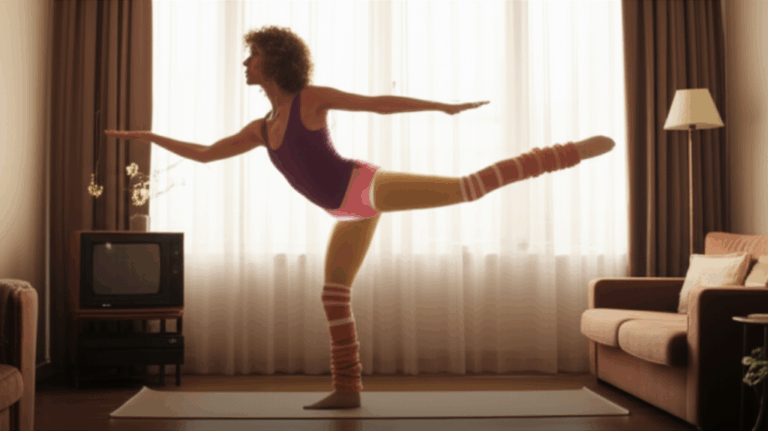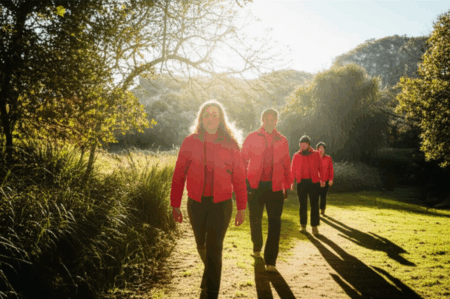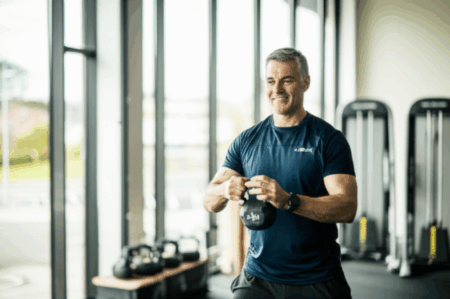In an era of high-tech fitness trackers, boutique studio classes, and on-demand streaming workouts, it’s easy to dismiss the brightly colored, leg-warmer-clad world of 1980s aerobics as a relic of the past. Yet, the name Jane Fonda still conjures images of powerful, accessible fitness that dominated living rooms for over a decade. But do these vintage workout tapes, once revolutionary, still “feel the burn” in today’s demanding fitness landscape? I dusted off a classic to find out.
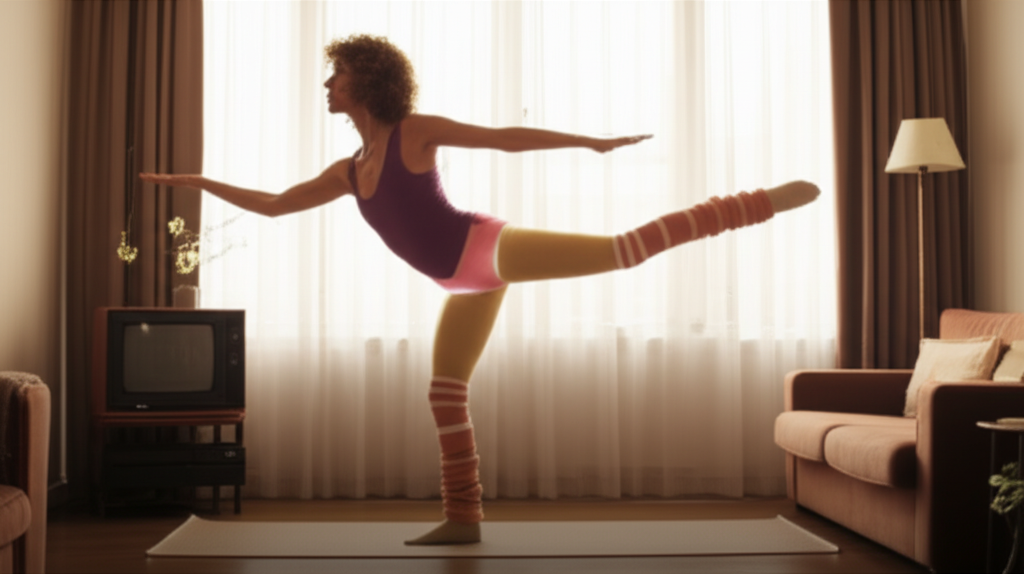
The Genesis of a Fitness Phenomenon
Jane Fonda, already an accomplished actress and activist, inadvertently stumbled into the fitness world after fracturing her ankle while filming The China Syndrome in 1978. Unable to continue her ballet routine, she sought a new regimen, leading her to exercise instructor Leni Cazden. This collaboration blossomed into a Beverly Hills studio and, ultimately, the iconic Jane Fonda’s Workout book in 1981, followed by the groundbreaking video in 1982.
The Jane Fonda’s Workout VHS tape became the first non-theatrical home video release to top sales charts and was an enormous success, selling 17 million units between 1982 and 1995. This wasn’t just a hit; it sparked a boom in women’s exercise classes, opening the formerly male-dominated fitness industry to women and establishing the celebrity-as-fitness-instructor model. Her encouraging shout, “Feel the burn!”, became a common saying, and the ballet-style leg warmers she sported became a widespread fashion trend. Beyond the leotards and synth-pop, Fonda’s fitness empire was also a vehicle for her political activism, with profits funding her political action committee, Campaign for Economic Democracy.

Stepping Back in Time: The Experience of a Jane Fonda Workout
For my dive into retro fitness, I opted for one of her classic full-body aerobic workouts, specifically Jane Fonda’s Original Workout. Popping in the tape (or, in my case, queuing up the digital re-release), I was immediately transported. The studio set, the vibrant leotards, and the undeniable enthusiasm of Fonda and her background exercisers set a distinctly cheerful, high-energy tone.
A typical workout structure includes:
- Warm-up: Gentle movements to prepare the body.
- Arm Work: Often involving small, repetitive circles and presses, sometimes with light hand weights.
- Waist Work: Side bends and rotations.
- Abdominal Work: Crunches, leg lifts, and toe reaches performed on the floor.
- Leg Work: A variety of standing and floor exercises targeting thighs and glutes, including lunges and leg raises.
- Buttocks Work: Focused glute exercises.
- Cool-down: Stretching to increase flexibility and reduce soreness.
Fonda’s instructional style is both authoritative and incredibly encouraging. She explains the movements clearly, emphasizes proper form (though some cues might be considered dated by today’s standards), and consistently reminds you to “feel the burn.” While the fashion screams “1980s,” the foundational movements are familiar, echoing many exercises found in modern low-impact aerobics, barre, or even some dance cardio classes.

The Workout’s Effectiveness: Did it Still “Feel the Burn”?
After an hour-long session, the answer is a resounding “yes.” Despite initial skepticism about its intensity compared to contemporary workouts, Jane Fonda’s routine delivered a surprisingly effective challenge.
Cardiovascular Health
The aerobic sections, characterized by marching, stepping, and arm movements, definitely elevated my heart rate. While not as high-impact as a modern HIIT session, the sustained, rhythmic cardio was excellent for improving cardiovascular endurance and boosting metabolism.
Strength and Toning
The targeted segments for arms, waist, abdominals, and legs were particularly effective. The repetitive nature of the exercises, coupled with the option to use ankle weights or light dumbbells (as demonstrated in some of her later videos), created a significant muscular “burn.” Exercises like leg lifts and glute pulses effectively worked smaller stabilizing muscles often neglected in more generalized routines. I certainly felt it in my glutes and thighs.
Flexibility and Core Strength
The extensive warm-up and cool-down periods, featuring deep stretches, were a welcome addition, promoting flexibility often overlooked in faster-paced modern workouts. The abdominal section, with its focus on crunches, toe reaches, and twists, effectively engaged the core.
Compared to an intense F45 class, the Jane Fonda workout felt less about pushing to failure and more about sustained movement and muscle engagement. However, it shared similarities with the more foundational, low-impact classes found on many modern workout apps, proving its enduring relevance for general fitness.

Beyond the Sweat: Jane Fonda’s Lasting Legacy
Jane Fonda’s influence extends far beyond mere exercise tapes. She almost single-handedly pioneered the home fitness industry, making exercise accessible to millions of women who previously had limited options outside of male-dominated gyms. Her holistic approach, combining physical fitness with emotional wellness, was ahead of its time.
Recognizing evolving needs, Fonda herself adapted her fitness approach over the years, releasing low-impact workouts and later, her “Prime Time” series aimed at older adults. Even today, at 87, she remains active, advocating for movement and recently collaborating on virtual reality (VR) fitness classes that mimic her original routines, bridging the past and future of fitness. She continues to emphasize that staying active is crucial for maintaining independence and quality of life as one ages.

The Verdict: Are ’80s Aerobics Still Relevant?
Trying Jane Fonda’s ’80s workout tapes revealed that while the aesthetics have certainly changed, the core principles of effective exercise remain timeless.
Pros:
- Accessibility: Easily done at home with minimal equipment.
- Foundational Movements: Teaches basic aerobic and strength exercises that are still highly effective.
- Full-Body Engagement: Comprehensive routines that work multiple muscle groups.
- Cardiovascular Benefits: Provides solid aerobic conditioning.
- Nostalgia and Fun: The peppy atmosphere and classic tunes (often including popular artists like The Jacksons and REO Speedwagon on her accompanying records) can make working out genuinely enjoyable.
- Modifiable: Many exercises can be adjusted for different fitness levels, and subsequent videos offered variations like “Easy Going” and “Low Impact” workouts.
Cons:
- Dated Cues: Some instructions might not align with current biomechanical understanding, though overall risk is low for most.
- Body Image Focus: Earlier tapes occasionally had a focus on aesthetics over pure strength, reflecting societal norms of the time.
- Lack of Personalization: Unlike modern apps, there’s no immediate feedback or adaptive programming.
Ultimately, Jane Fonda’s 80s workout tapes hold up remarkably well. They are a fantastic option for anyone seeking an accessible, fun, and effective workout, whether you’re a beginner, looking for a low-impact day, or simply craving a dose of empowering nostalgia. Her legacy as a fitness icon who revolutionized how women approached exercise is clearly well-deserved, proving that some trends, like feeling the burn, never truly go out of style.

